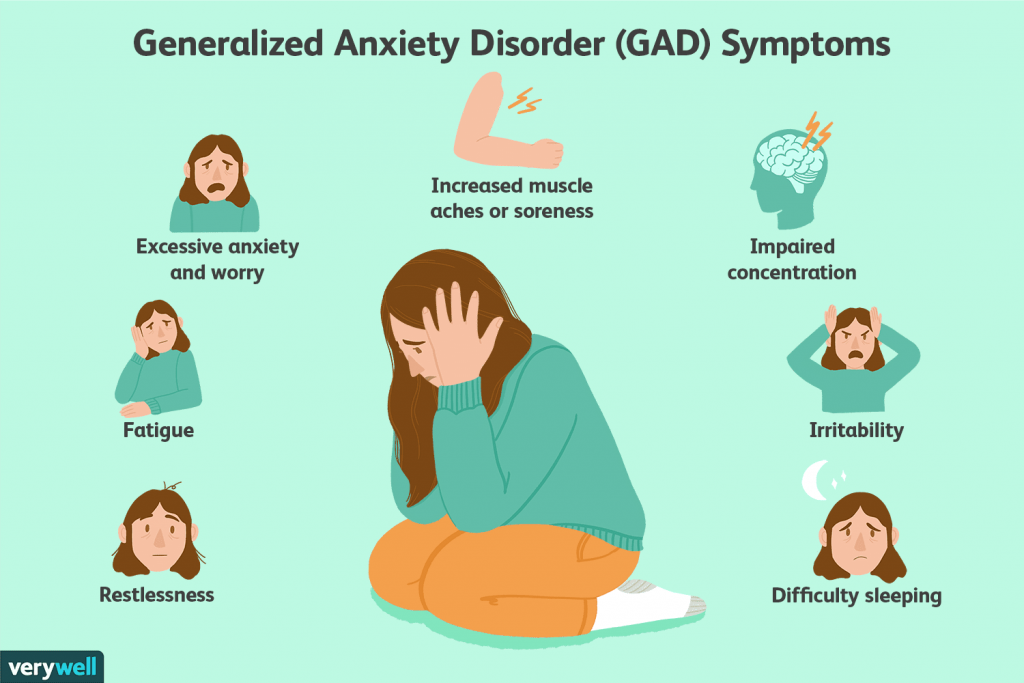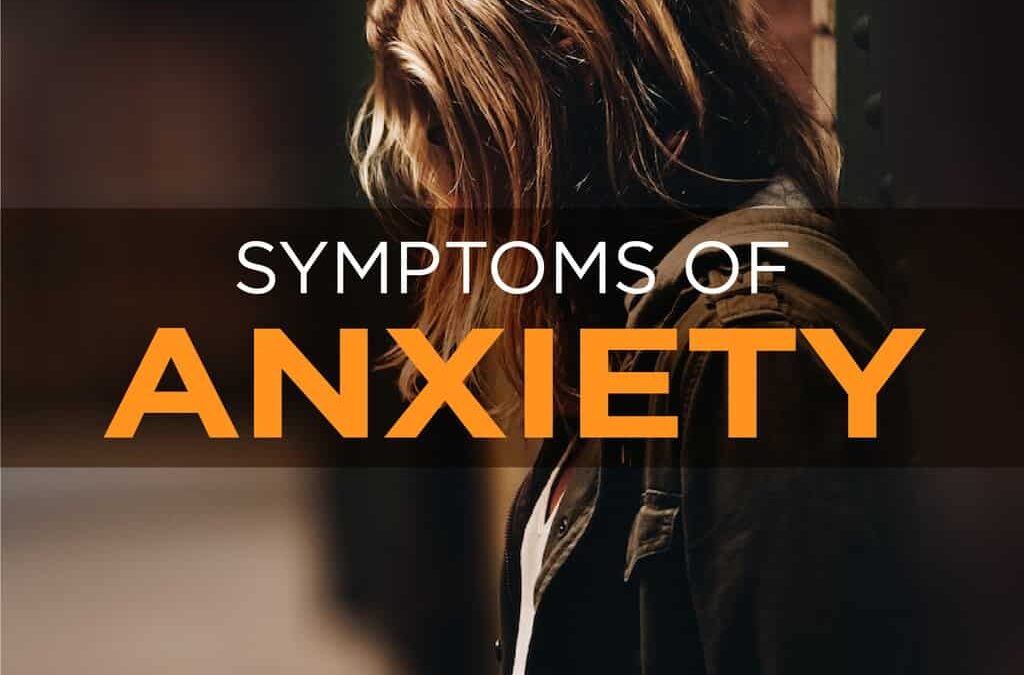The Invisible Battle | Anxiety – General Anxiety Disorder (GAD) is a prevalent form of anxiety that goes beyond the typical anxiety experienced before a significant event. Individuals with GAD feel excessive worry that is hard to control and affects their daily activities. It’s not just about feeling anxious; it’s an ongoing state of tension and nervousness, even when there is little to provoke it.
Key Takeaways
- General Anxiety Disorder (GAD) is marked by persistent, excessive worry about everyday activities, leading to significant distress and interference in daily life.
- Stress Triggers can include major life changes, trauma, or ongoing problems like work stress or financial worries, heightening anxiety levels.
- Panic Attacks are intense episodes of fear that peak within minutes, often accompanied by physical symptoms like chest pain or shortness of breath.
Symptoms of General Anxiety Disorder
The symptoms of GAD can manifest both psychologically and physically:
- Psychological Impact: Constant worry, irritability, difficulty concentrating, and a perpetual feeling that something bad will happen.
- Physical Symptoms: Fatigue, muscle tension, sleeping difficulties, and restlessness are common.
For those struggling, the anxiety does not stem from any specific threat and can fluctuate in intensity, often worsening during periods of stress (Mayo Clinic).
Identifying and Managing Stress Triggers
Understanding what triggers your anxiety is pivotal in managing it. Stress triggers can vary widely but often include:
- Life Stressors: Major life changes, such as moving to a new city or changing jobs, can act as catalysts.
- Chronic Health Issues: Ongoing health problems can lead to a constant state of worry about treatment and prognosis.
- Environmental Factors: Sometimes, the environment you are in can heighten your anxiety, such as being in crowded places.
Learning to identify personal triggers is a crucial step toward management, allowing individuals to seek appropriate interventions or lifestyle adjustments to mitigate these stressors.

Understanding Panic Attacks and Panic Disorder
Panic Disorder is characterized by sudden and repeated panic attacks—episodes of intense fear that may be triggered by stressors or occur unexpectedly. These attacks are marked by a fear of disaster or losing control even when there is no real danger.
Symptoms of Panic Attacks Include:
- Physical Symptoms: Heart palpitations, chest pain, dizziness, shortness of breath, and numbness or tingling sensations.
- Emotional Distress: Feelings of unreality, fear of impending doom, or fears of dying.
These symptoms can be so intense that people often feel they are having a heart attack or other life-threatening health emergencies (Mayo Clinic).
When to Seek Help
It’s essential to seek help if your anxiety or panic attacks:
- Interfere significantly with your daily life.
- Are difficult to control and cause you distress.
- Lead you to avoid common situations or places to prevent feelings of anxiety or panic.
Early intervention can often prevent complications, including the development of other anxiety disorders or depression (Mayo Clinic).

To explore more about anxiety and its impact, you can visit these resources:
- Mayo Clinic on Anxiety Disorders
- Generalized Anxiety Disorder – Mayo Clinic
- Panic Attacks and Panic Disorder – Mayo Clinic
Table of Anxiety and Panic Disorders
Understanding the spectrum of anxiety disorders can clarify how these conditions might affect various aspects of life. Here’s a brief look:
| Disorder | Key Symptoms | Impact on Life |
|---|---|---|
| General Anxiety Disorder | Persistent worry, physical tension, sleep disturbance | Interferes with daily activities, reduces quality of life |
| Panic Disorder | Sudden panic attacks, fear of recurring attacks | May cause avoidance of activities, places, or social interaction |
| Social Anxiety Disorder | Extreme fear of social situations | Can lead to social isolation and difficulty in professional settings |
Each type of anxiety disorder can significantly impair functioning and quality of life, necessitating appropriate management strategies (Mayo Clinic) (Mayo Clinic).
Strategies to Manage Anxiety
Effective management of anxiety involves a combination of therapies, lifestyle adjustments, and sometimes, medication. Here are some commonly recommended strategies:
Psychological Therapies
- Cognitive Behavioral Therapy (CBT): This is a highly effective treatment for reducing anxiety by teaching patients to recognize and change thought patterns and behaviors that lead to distressing emotions.
- Exposure Therapy: This involves gradual exposure to the source of anxiety, helping individuals face and gain control of their fear.
Medications
- Antidepressants: Often used to treat anxiety, especially when it co-occurs with depression.
- Benzodiazepines: Used for short-term relief of severe anxiety symptoms. However, they can be habit-forming and are not advised for long-term use.
Lifestyle Changes
- Regular Exercise: Physical activity can help manage anxiety symptoms by releasing endorphins and providing a focused activity that can distract from worries.
- Mindfulness and Meditation: Practices like yoga and meditation can help calm the mind and reduce anxiety.
For further details on treatments, the Mayo Clinic provides extensive resources on managing anxiety disorders.

Frequently Asked Questions about Anxiety
What is the difference between anxiety and panic attacks?
Answer: Anxiety generally refers to a persistent state of excessive worry that can affect daily functioning. Panic attacks are sudden intense episodes of fear or discomfort, often with physical symptoms like chest pain or breathlessness.
Can anxiety disorders be completely cured?
Answer: While some people may experience periods where they are free from anxiety, many individuals manage symptoms rather than completely eliminate the disorder. Treatment helps reduce the intensity and frequency of symptoms.
Are there specific diets that help with anxiety?
Answer: No specific diet cures anxiety, but a balanced diet, reduced caffeine and sugar intake, and avoiding alcohol can help manage symptoms.
For more information, visit Generalized Anxiety Disorder at the Mayo Clinic website.
Understanding anxiety is crucial for managing it effectively and leading a fulfilling life. Though it can be a challenging journey, with the right tools and support, individuals can regain control and improve their quality of life.

